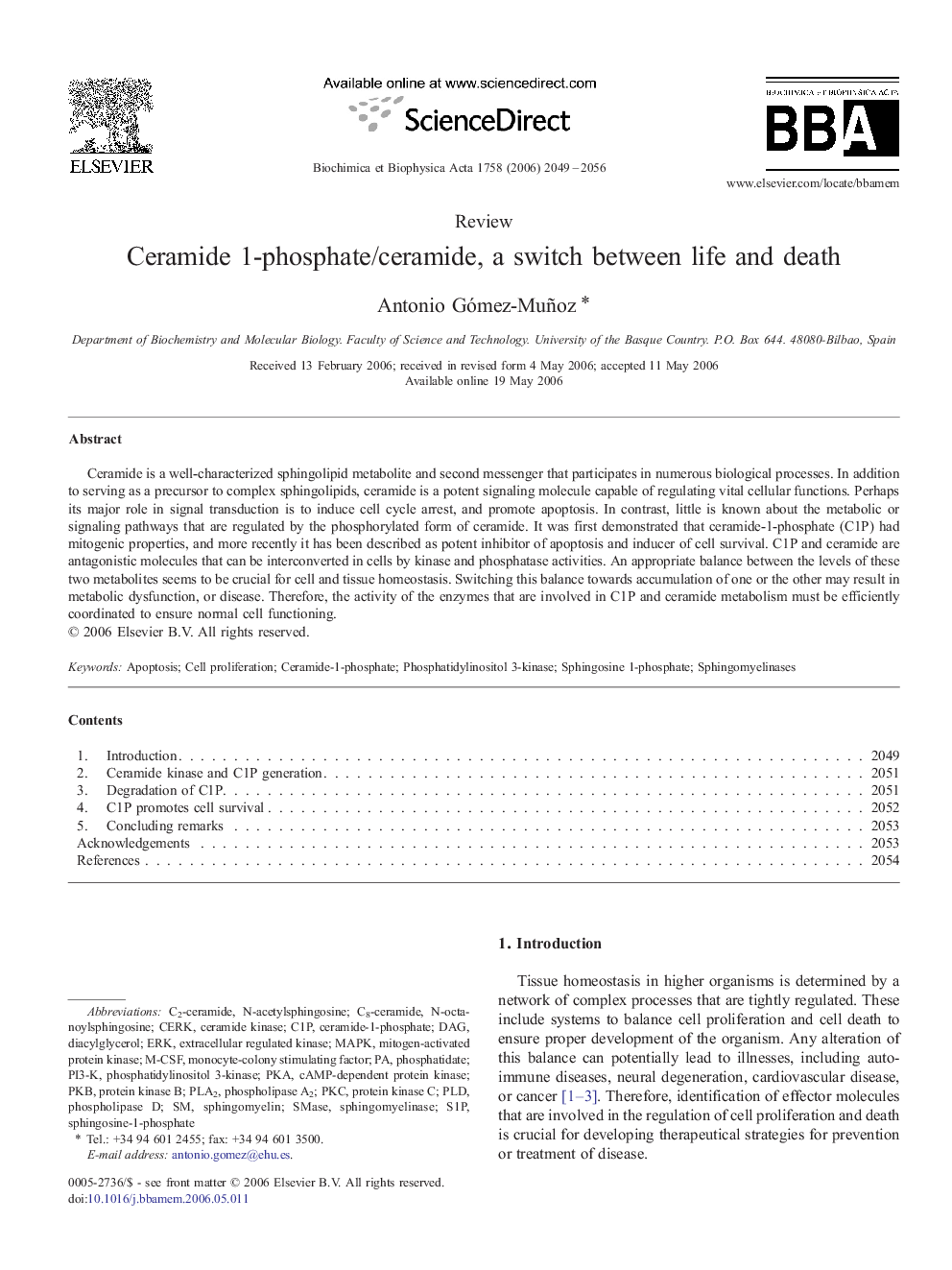| Article ID | Journal | Published Year | Pages | File Type |
|---|---|---|---|---|
| 1945800 | Biochimica et Biophysica Acta (BBA) - Biomembranes | 2006 | 8 Pages |
Ceramide is a well-characterized sphingolipid metabolite and second messenger that participates in numerous biological processes. In addition to serving as a precursor to complex sphingolipids, ceramide is a potent signaling molecule capable of regulating vital cellular functions. Perhaps its major role in signal transduction is to induce cell cycle arrest, and promote apoptosis. In contrast, little is known about the metabolic or signaling pathways that are regulated by the phosphorylated form of ceramide. It was first demonstrated that ceramide-1-phosphate (C1P) had mitogenic properties, and more recently it has been described as potent inhibitor of apoptosis and inducer of cell survival. C1P and ceramide are antagonistic molecules that can be interconverted in cells by kinase and phosphatase activities. An appropriate balance between the levels of these two metabolites seems to be crucial for cell and tissue homeostasis. Switching this balance towards accumulation of one or the other may result in metabolic dysfunction, or disease. Therefore, the activity of the enzymes that are involved in C1P and ceramide metabolism must be efficiently coordinated to ensure normal cell functioning.
